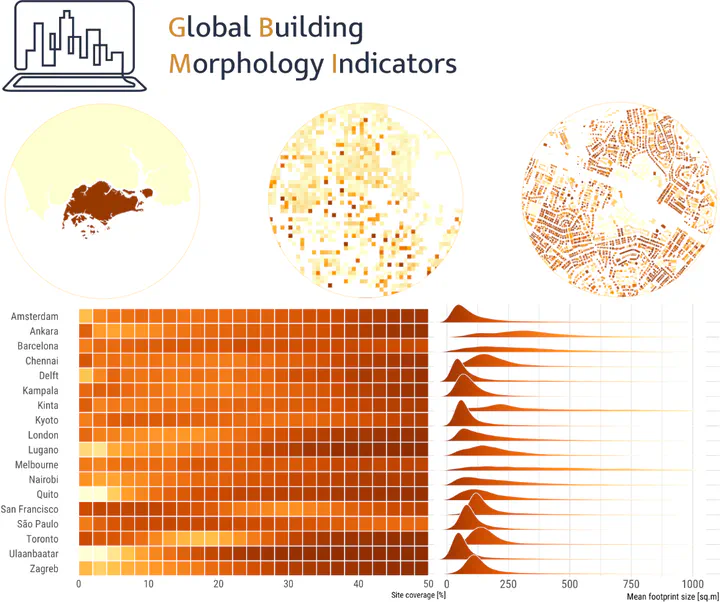
Abstract
Characterising and analysing urban morphology is a continuous task in urban data science, environmental analyses, and many other domains. As the availability and quality of data on them have been increasing, buildings have gained more attention. However, tools and data facilitating large-scale studies, together with an interdisciplinary consensus on metrics, remain scarce and often inadequate. We present Global Building Morphology Indicators (GBMI) — a three-pronged contribution addressing such shortcomings: (i) a comprehensive list of hundreds of building form multi-scale measures derived through a systematic literature review; (ii) a methodology and tool for the computation of these metrics in a database suited for big data and comparative studies, and release the code freely and open-source; and (iii) we carry out the computations using high performance computing, generating a public repository with data quantifying the form of selected urban areas around the world, and demonstrate their value with novel analyses comparing morphological parameters across cities. GBMI introduces a formalised, structured, modular, and extensible method to compute, manage, and disseminate urban indicators at a large scale and high resolution, while the precomputed dataset facilitates comparative studies. The theory and implementation traverse multiple scales: at the building level, both individual and contextual ones based on encircling buildings by multiple buffers, and aggregations at several hierarchical administrative levels and at multiple grids. Our open dataset, comprising billions of records on a growing scope of urban areas worldwide, is the most comprehensive instance of morphological data parametrising the individual building stock, supporting studies in urban analytics and a range of disciplines.